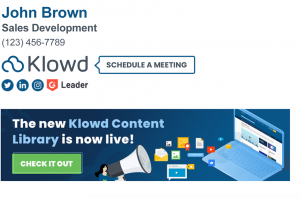A former ExactTarget VP, Rohrs had a front row seat to the MarTech explosion fueled by the 2013 SalesForce–ExactTarget $2.5 billion deal.

When marketing software provider ExactTarget was acquired by SalesForce in June 2013 for an astounding $2.5 billion, Gartner had already predicted CMOs would be spending more on IT than CIOs by 2017. The deal only reinforced Gartner’s forecasts that marketing technology was taking over more and more of traditional marketing budgets.
Serving as ExactTarget’s vice president of marketing insights at the time of the acquisition, Jeff Rohrs had a front row seat to the deal that further fueled the MarTech explosion.
Not only has Rohrs written the book on digital marketing (in 2013 Rohrs published Audience: Marketing in the Age of Subscribers, Fans and Followers), he recently was named CMO for a leading marketing technology provider.
Last month, Rohrs joined Yext, the digital location management solution that helps brands increase their local SEO visibility. As CMO, Rohrs oversees the company’s global brand strategy, product marketing, field marketing, demand generation and customer engagement initiatives. He says his company’s mission is to enable organizations of every size to harness the power of their brick-and-mortar locations to engage today’s mobile consumers.
“93% of all retail sales in the US are still originating from physical stores,” says Rohrs. “It is imperative that brands actively manage their location data — name, addresses, phone numbers, store hours and more — across the full breadth of apps, maps, GPS systems, directories, social networks and search engines.”
With its exclusive global network of more than 100 publishers — a growing list that includes Apple Maps, Bing, Facebook, Foursquare, Yahoo and Yelp — Yext’s PowerListing suite of products helps companies control their location data, and the company plans to launch new products this fall that will help clients engage with customers both during and after in-store visits.
A true digital marketing veteran, Rohrs was kind enough to share his MarTech experience and insight, as well as his predictions on where the industry is headed.

Takeaways:
1. Technology is a tool to solve problems, not the solution itself.
2. Invest as much in your people as you do in your technology.
3. Align your technology and people with clear short- and long-term objectives to ensure your investments are both strategic and productive.
Amy Gesenhues: How do you define “marketing technology”?
Jeff Rohrs: Marketing technology encompasses any software (cloud-based or otherwise) and devices that enable brands to communicate and engage with consumers in order to drive sales, service and customer satisfaction.
The internet’s global adoption, combined with the explosion in both devices and communication channels, has exponentially increased the variety of “marketing technologies” available to marketers today.
Amy Gesenhues: How has marketing technology impacted your role as a top-level marketing executive — both now and during previous roles?
Jeff Rohrs: My career is really based on the rapid expansion and adoption of marketing technologies.
[When I was] president of Optiem back in 2003–2007, we were helping clients embrace email, SEO and social media. While at ExactTarget (2007–2013), I was part of a team that was tasked with marketing to marketers — and our products (email, SMS, Web and social marketing management platforms) were emerging marketing technologies that required explanation, education and strategic support.
After ExactTarget was acquired by Salesforce (2013–2015), I became a part of the larger Salesforce Marketing Cloud, which, in turn, was part of the larger family of cloud technologies (Sales, Service, Marketing, Community, Apps and Analytics). That experience opened my eyes to the fact that marketing technology generates the greatest success when it is part of a greater technology vision that puts the customer at the center of everything you do.
At Yext, I’ll be seeking to invest in marketing technologies that keep us growing, while also allowing us to deepen our relationships with customers. The B2B buying experience is far more personal than many people think, as quite often people’s jobs are on the line. For that reason, I hope to integrate marketing technologies that help us serve and not just sell.
As my good friend Mr. Joel Book likes to say, “Serving is the new selling.”
Amy Gesenhues: What about the inherent overlap of marketing technology when it comes to what belongs to marketing and what belongs to IT? What’s the most effective way for a company to determine what belongs to the CMO versus what falls under the CIO’s domain?
Jeff Rohrs: My experience here is more observational than first-hand, but what I can say is that the most successful implementations of marketing technology usually occur in organizations where the CMO and CIO are collaborative.
The move of most software to the cloud is forcing CIOs to build teams that are far more strategic and consultative, and that can benefit marketing in the long run.
Amy Gesenhues: What would you define as the biggest benefits of integrating marketing technology to the overall marketing function? What about challenges?
Jeff Rohrs: The biggest benefit integrated marketing technologies can give you is real-time visibility into performance and service issues. This allows your team to address “red flag issues” quickly and identify new opportunities to sell, engage and serve.
In the past, such issues might take weeks or months to appear on a spreadsheet. Now, however, they can be surfaced on a real-time dashboard.
It’s still pretty early in the game here for me. With just a month under my belt, there are not so much challenges as a huge to-do list with job No. 1 being to build out our marketing team so we have the creative, digital and strategic talent necessary to help fuel our growth globally.
Amy Gesenhues: Where do you think most brands fail when it comes to managing their marketing technology efforts?
Jeff Rohrs: The greatest point of failure with any technology is human. We simply cannot think that you flip a switch and your problems are solved.
Software and devices are tools, and we must invest as much in the success of our people as we do in the technology we give them.
Yes, there are self-starters out there, but the majority of teams consist of people who need guidance, training and clearly-articulated goals. No software package is going to solve that need, so CMOs would be wise to partner with HR to ensure ongoing training, feedback and measurement.
Amy Gesenhues: How has marketing technology changed the role of CMO during recent years?
Jeff Rohrs: I think it enables CMOs to be more proactive than reactive and far more responsive to changing market demands.
For instance, the transparency of social media means that CMOs have a greater stake in both employee onboarding and customer service than ever before. This means that social listening and engagement technologies are must-haves to manage your brand, engage customers and channel employee energy in productive directions.
The CMOs may not sit behind the social control center, but they have a stake in seeing it work efficiently.
I think marketing technology also requires CMOs to work out of their comfort zones and empower their teams to make decisions that once may have been made more by committee. For instance, “optimization” is at the heart of what a marketing team should be doing — making everything they touch perform better.
The CMO can drive that vision, but the team must execute directly through the technologies at hand. It is then up to the CMO to see where efficiencies can be gained by deploying new technologies.
Amy Gesenhues: Where do you see marketing technology headed?
Jeff Rohrs: The past two years have brought a lot of consolidation in the marketing technology space and the emergence of the mega “Marketing Clouds” of Salesforce, Adobe, Oracle and others. I see that trend continuing as brands seek to get that Holy Grail of “a single view of the customer.”
However, I think we’re also seeing the emergence of a new generation of point marketing solutions — in large part, because the wave of consolidation slows innovation within acquired point solutions.
It will also be interesting to see whether CMOs gain greater responsibility over customer service in the coming years. If the best marketing is a satisfied, vocal customer, I can’t see CMOs sitting back and letting service operate completely separate from their organizations. Definitely a trend to watch.











